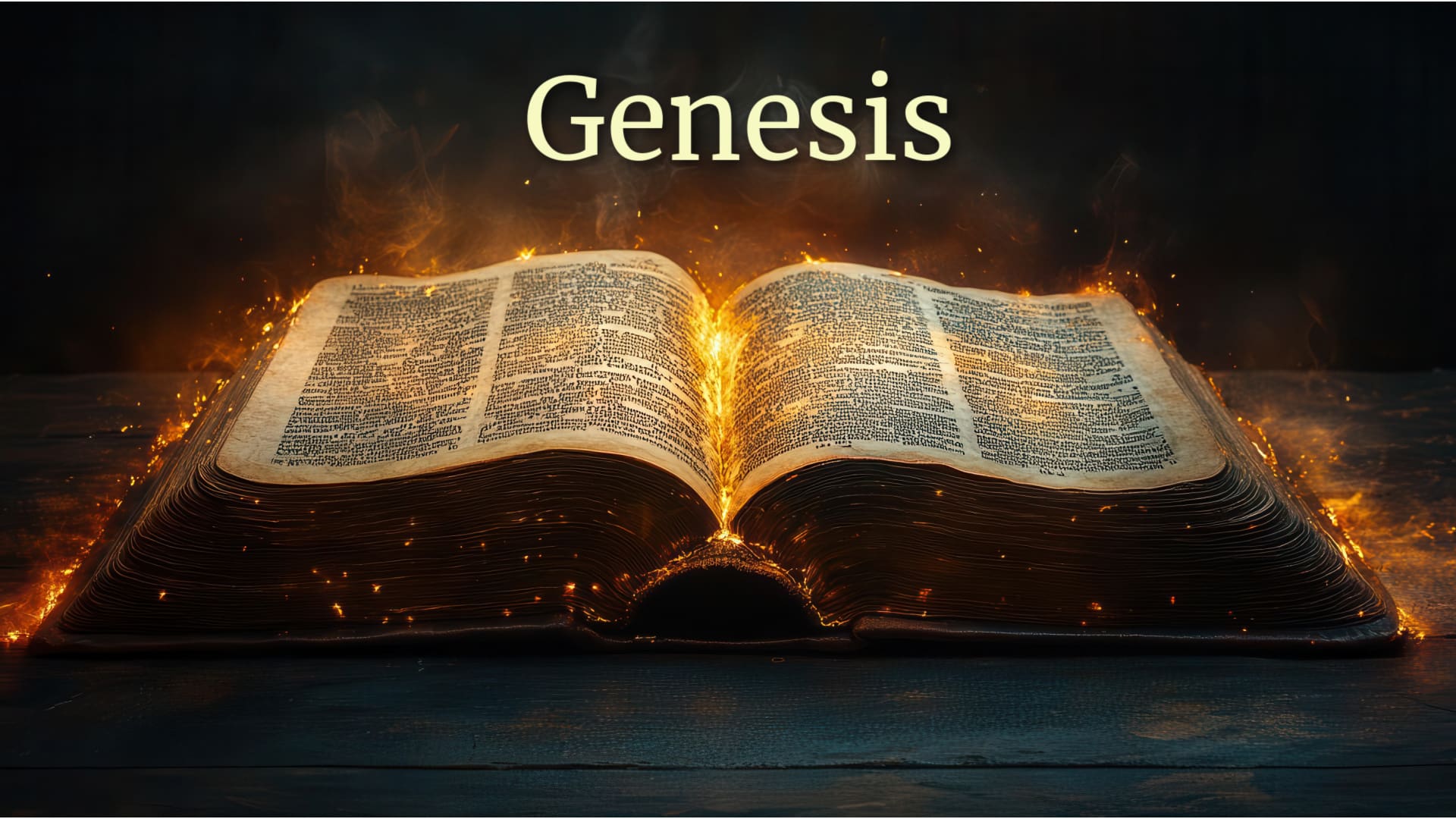
In Statu Viae
…for in the day that you eat of it you shall die. Gen. 2:17
As we view Genesis 1 and 2, we find that God made all things that make up His cosmic temple “good,” but not “good” in a finished sort of way. He left the three elements of chaos ─ darkness, the watery deep, and formless earth ─ out of which He created everything, as fundamental properties of the cosmos, but placed boundaries upon them. This established a binary bright side/dark side world thick with atmosphere, intrigue, danger, potential, and glory. It is within this that He planted the garden and placed humanity made in His own image, free with a terrifying power to choose. Shall he choose God and glory or choose to be “god” apart from God, resulting in chaos. Every choice has a consequence in this binary world. Either way, creation was created “in statue viae” (in a state of journeying) towards a perfection that lies at the consummation of all things. This consummation will happen, for God stands sovereign above space and time, but it will not happen apart from human choice and effort in “subduing the earth” and having “dominion over it.”
It is a given that God created the chaotic elements of darkness, watery deep, and formless earth although these creation narratives do not speak of their origin. In and of themselves they are not evil because Scripture everywhere is clear that God cannot be the author of evil. However, in the face of moral choice and the fall described in Genesis 3-11, these physical elements take on a moral symbolism. Darkness is a symbol of evil; the watery deep becomes a symbol of death (a moral issue) and the sea monster within the personification of death; and formless earth the result of evil and its domain. Without these symbols, evil would have no face. Although Hebrew cosmology rejected the pagan view that the world was created through the conflict of chaos gods and fertility gods, it freely borrows this imagery to describe the moral conflict that besets humanity. For instance, consider how creation is described in terms of a primordial conflict in Ps. 74:12-17:
Yet God my King is from old, working salvation in the midst of the earth. You divided the sea by your might; you broke the heads of Leviathan, you gave him as food for [sharks]. You cut open springs and brooks; you dried up ever-flowing streams. Yours is the day, yours also the night; you have established the luminaries and the sun. You fixed all the bounds of the earth; you made summer and winter. (RSV)
All cultures use mytho-poetic language to put a face on evil that otherwise passes by and through us every day unseen, barely observed, or blatant. The ancient Hebrews used the sea monster, a snake-like Leviathan with multiple heads (Is. 27:1), to expose it to their consciousness. Medieval Europe used the dragon which, 1) ate men, 2) horded gold although it had no use for it, 3) enslaves beautiful women although asexual, 4) a hybrid of snake and bird that flies. Today, in western culture, despite our rationalism and scientific mindset that does not readily have a category for evil, the vampire emerges as the supreme symbol of evil. Like the dragon, it feeds on men, is of old money, enslaves beautiful women, and is a hybrid bat/man. Evil brings men to feed on one another, and exploit through sex and money. The vampire gives evil a face so we can actually see something that is invisible but very familiar, and this is why he is so popular.
And so we like Adam and Eve must make the choice and fight the monster. This choice is not merely a private one, but like Adam and Eve’s, has cosmic implications. It may not be the kind of life we would naturally prefer, for we long for the perfection for which we were made.
Instead, we are, like the world around us, in statu viae, in a state of journeying. In the end, there will be a new heaven and a new earth, with no chaos monster to fight, no chaotic elements, the binary bonds will break. If there is something like darkness, it will have no evil connotations; our old sun and moon will pass from memory, for the Eternal City will be lit by the light of God (Rev. 21:23, 22:5). If there is something like a sea, it will be subdued (see the “glassy sea” in Rev. 15:2), no longer associated with death (Rev. 21:1). The city is a garden, with no formless or barren earth. For this the faithful long, as St. Augustine so eloquently expressed:
“… let me enter my chamber and sing my songs of love to Thee, groaning with inexpressible groaning in my distant wandering, and remembering Jerusalem with my heart stretching upwards in longing for it: Jerusalem my fatherland, Jerusalem who is my mother …”
A
0 Comments